ISS/Kibo Monthly News: June, 2016
Last Updated: August 16, 2016
Topic of the Month
Launch date set for Astronaut Takuya Onishi
At the Flight Readiness Review (FRR) held on June 23 in Houston, the date (July 7) and time (10:36 a.m.) for launching the Soyuz MS-01 spacecraft (47S) that will carry Astronaut Takuya Onishi and his crewmates were officially scheduled.
On June 24, Astronaut Takuya Onishi and his crewmates Anatoly Ivanishin and Kathleen Rubins flew from the Gagarin Cosmonaut Training Center (GCTC) to Baikonur Cosmodrome in Kazakhstan where they made final preparations for their launch, checked the preparation of the Soyuz MS-01 spacecraft, had their Sokol spacesuits fit-checked, and confirmed their launch procedures.
While donning their Sokol spacesuits, the trio boarded the Soyuz MS-01 spacecraft and confirmed operations of the actual hardware.
Confirmation of the operational procedures document covered everything from launch to docking with the ISS, hatch opening and ingress to the ISS.
After docking with the ISS, it takes about an hour and a half to enter the ISS as the crew must first check for any leaks between the Soyuz spacecraft and the ISS after injecting air into the docking port.
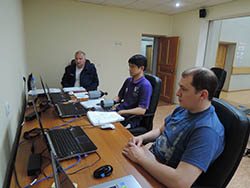
|
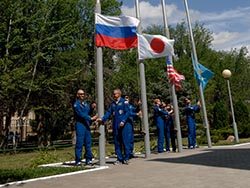
|
|
Manual docking simulation (June 28. Photo courtesy of Takuya Onishi) |
The Expedition 48/49 prime and backup crewmembers raise national flags (June 26. JAXA/NASA/Alexander Vysotsky) |
JAXA Astronauts This Month
Astronaut Akihiko Hoshide participates in CAVES training
Astronaut Akihiko Hoshide attended the European Space Agency (ESA)’s Cooperative Adventure for Valuing and Exercising human behaviour and performance Skills (CAVES) training, together with astronauts from NASA, Roscosmos, ESA, and China.
The participants in CAVES training live together as a group for one week in a cave located 800 meters underground on the island of Sardinia, Italy. CAVES is intended to improve the skills required for long-duration missions on the ISS, such as cooperativeness and self-management skills in a severe environment lacking sunlight and where food and equipment are limited.
The participants this time will test new equipment that will lead to the mapping of three-dimensional drawings of caves.
The training includes pre-training to learn about cave exploration, safety management, and how to use tools. After the completion of pre-training, CAVES will be held from July 1 – 6.
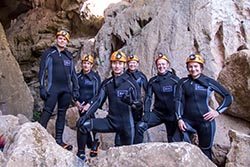
|

|
|
Six CAVES participants (Hoshide, third from the right) (Credit: JAXA/ESA-S.Sechi) |
Hoshide navigating a narrow alley in a cave (Credit: JAXA/ESA-V.Crobu) |
Kibo this Month
Retrieval of the first samples of ExHAM
A set of the first samples attached to the Exposed Experiment Handrail Attachment Mechanism (ExHAM) was retrieved inside the Japanese Experiment Module (“Kibo”) after having been exposed to the space environment for about a year since May 26, 2015.
ExHAM is a mechanism to which more than ten experiment samples can be attached, and is fixed to a handrail on the Kibo’s Exposed Facility (EF) to conduct space experiments in an exposed environment.
On June 13, ExHAM was grappled by Kibo’s robotic arm–Japanese Experiment Module Remote Manipulator System Small Fine Arm (JEMRMS SFA)–and then retrieved inside Kibo via the Kibo’s airlock.
At the Tsukuba Space Center (TKSC), the researchers for each experiment theme and related personnel gathered to monitor the operation.
Following the retrieval of samples from ExHAM, NASA Astronaut Jeffrey Williams attached new experiment samples to ExHAM from June 17 – 23.
On June 29, ExHAM was again pulled out into the space environment to undergo the next experiment. As such, ExHAM allows for a quicker installation and return of the experimental samples.
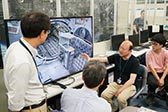 |
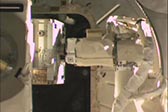 |
 |
|
Researchers monitor ExHAM operation at the TKSC (June 23) |
ExHAM taken out to the outside through airlock by the SFA (June 29) |
ExHAM being attached to a handrail of the EF (June 29) |
ISS this Month
The Expedition 46/47 crew returns to Earth
On June 18, the Expedition 46/47 crew consisting of Astronauts Timothy Kopra, Timothy Peake, and Cosmonaut Yuri Malenchenko returned to Earth after spending 186 days aboard the ISS.
Among them, Malenchenko, a veteran of six space flights, has accumulated a total of 828 days spent in space, thereby setting the second longest record in space just behind that of Cosmonaut Gennady Padalka.
Combustion experiment conducted in the Cygnus spacecraft
On June 14, the Cygnus spacecraft (Orbital ATK CRS-5) was unberthed from the ISS. After Cygnus had traveled a safe distance away, NASA’s combustion experiment called Saffire-1 was conducted by remote control from the ground.
The Saffire-1 experiment investigates how fire behaves in microgravity so that engineers can design safer spacecraft for further exploration in the near future.
A large sample 40 cm×95 cm in size was ignited and the video image was sent to the ground. In the ISS or Space Shuttles, samples as small as a few cm in size have been used for combustion experiments for the safety of crews. The sample used this time is the largest ever.
And during the flight of Cygnus until its reentry on June 22, four CubeSats were deployed from the spacecraft.
Crew completes ingression of BEAM
On June 6, Expedition 47 crew entered BEAM for the first time to collect an air sample and obtain data during its expansion.
Astronaut Jeff Williams Enters BEAM Expandable Module (NASA YouTube)
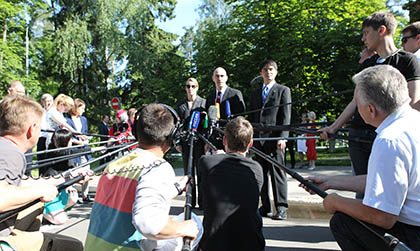
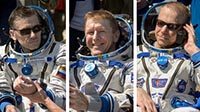
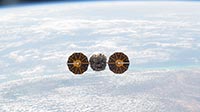
Comments are closed.